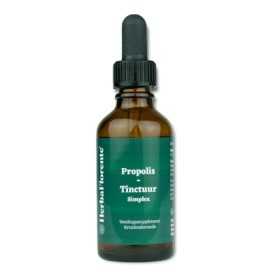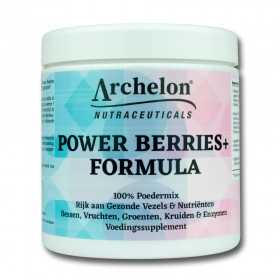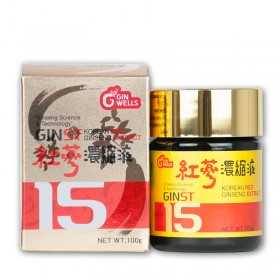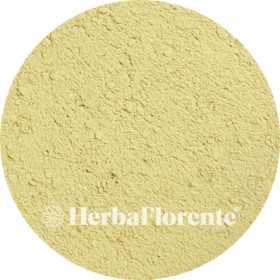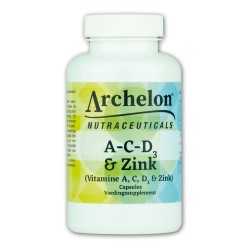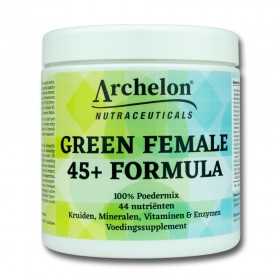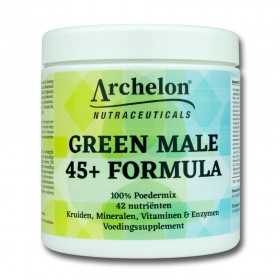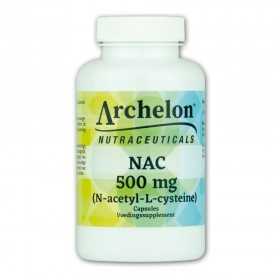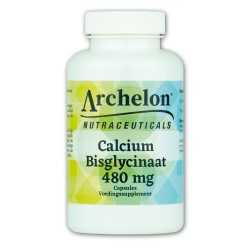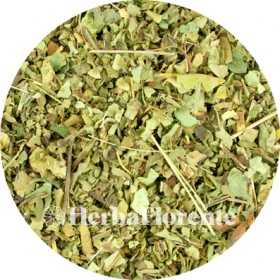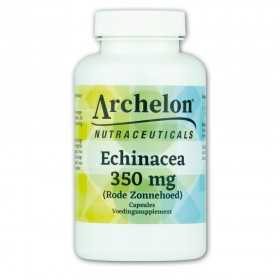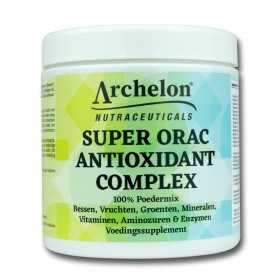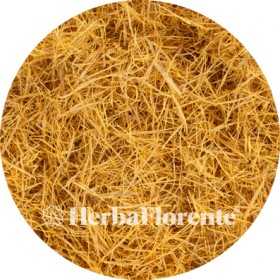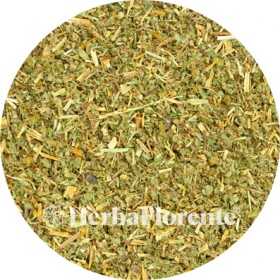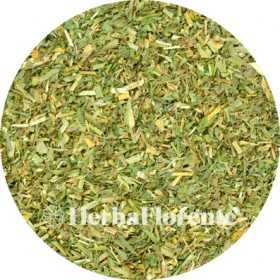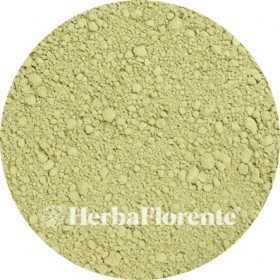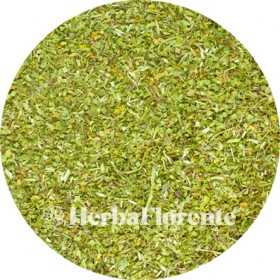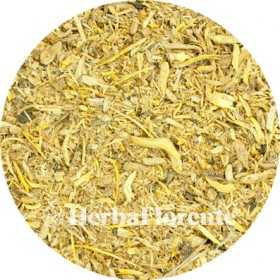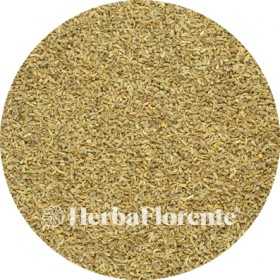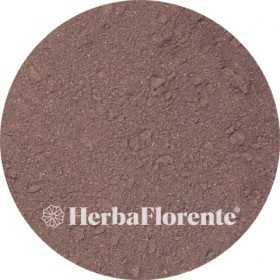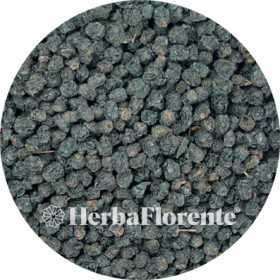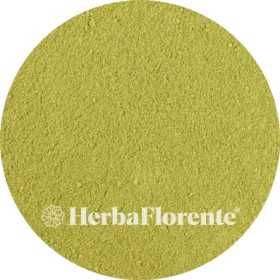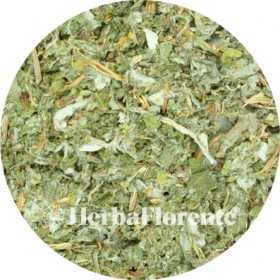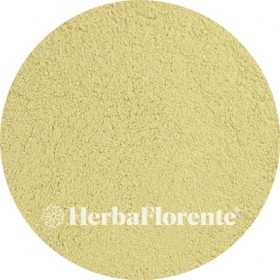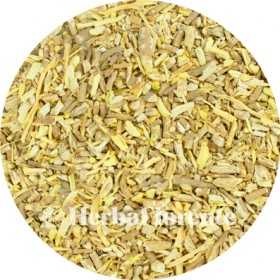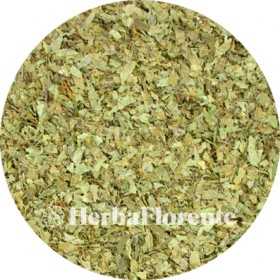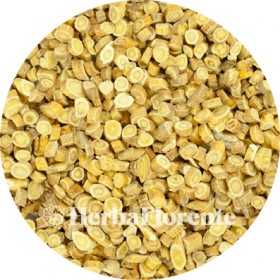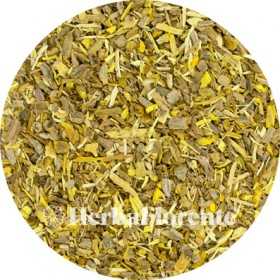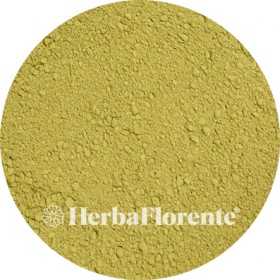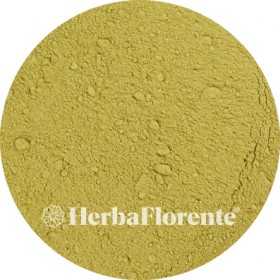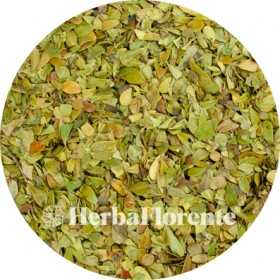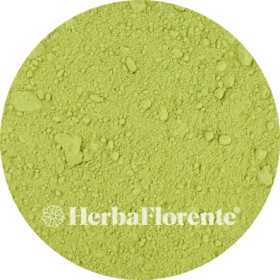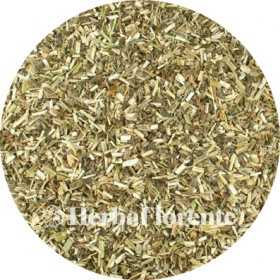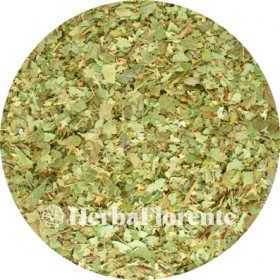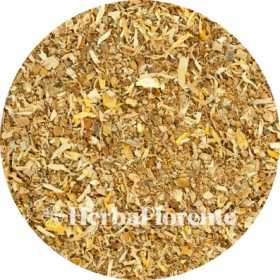Herbs
There are 207 products.
Agremonie (Common) (Church Steeples) - Agrimonia eupatoria
The common agrimony (Agrimonia eupatoria) is a herbaceous plant belonging to the rose family (Rosaceae). This plant, with its bright yellow flowers in long, slender spikes, is quite common on calcareous roadsides and dikes in Belgium and the Netherlands.
In herbal medicine, this plant is used for various purposes due to its active constituents, including triterpenes, tanning and bitter substances, flavonoids, silicic acid and mucilages.
The most common use is as a tea, but the herb can also be made into a tincture.
In herbal medicine, this plant is used for various purposes due to its active constituents, including triterpenes, tanning and bitter substances, flavonoids, silicic acid and mucilages.
The most common use is as a tea, but the herb can also be made into a tincture.
€2.00
From: €2.00
Alfalfa - Medicago sativa
Lucerne (Medicago sativa), also known as alfalfa, is a perennial plant that can live between five and twelve years, depending on the variety and climate. With a height of up to one meter and clusters of small purple flowers, the plant resembles clover. The plant has a deep and powerful root system that can extend up to 4.5 meters.
Lucerne is native to Europe and is grown worldwide as animal feed. In the Netherlands, alfalfa is mainly dried artificially for the production of protein-rich animal feed.
Lucerne is native to Europe and is grown worldwide as animal feed. In the Netherlands, alfalfa is mainly dried artificially for the production of protein-rich animal feed.
€2.00
From: €2.00
Algae (Clubweed) - Ascophyllum nodosum
Ascophyllum nodosum, better known as clubweed, is a type of brown algae characterized by the presence of small blisters with slimy contents on the stems, in which the reproductive organs are located. These stems also contain large, gas-filled tubercles that help the plant stand upright under water. Knotweed varies in color from olive green to golden brown. The thallus can reach a length of 30 to 60 cm and is flexible, so that it can sway with the powerful movements of the water.
€2.00
From: €2.00
American Skullcap - Scutellaria lateriflora
Skullcap (Scutellaria) is a versatile genus of both annual and perennial plants, belonging to the Lamiaceae family. The genus includes about two hundred species, all of which are characterized by their characteristic, calyx-shaped flowers. These flowers are distinguished by clearly visible upper and lower lips. The name "Scutellaria" is derived from the Latin word "scutella", which means "small shield" or "saucer", and refers to the shape of the calyx.
€6.25
From: €6.25
Angelica - Angelica angelicae
The angelica (Angelica archangelica), also known as archangelica, belongs to the umbellifer family (Apiaceae). This plant thrives in moist, very nutrient-rich soil along water edges, such as the IJsselmeer, river banks and in osier banks. In addition, the angelica is also grown in gardens.
Historically, angelica is known for its medicinal properties. The plant is still grown locally from central Germany to Turkestan. A sweet-smelling oil known as angelica oil is extracted from the seeds and roots, which is used in the cosmetic industry, liquor distilleries and bakeries. In addition, the stems and petioles are often candied because of their sweet and fragrant taste.
Historically, angelica is known for its medicinal properties. The plant is still grown locally from central Germany to Turkestan. A sweet-smelling oil known as angelica oil is extracted from the seeds and roots, which is used in the cosmetic industry, liquor distilleries and bakeries. In addition, the stems and petioles are often candied because of their sweet and fragrant taste.
€2.60
From: €2.60
Anise - Pimpinella anisum
Anise seed has a naturally sweet, warm taste reminiscent of licorice. It is a versatile seasoning that can be used in both sweet and savory dishes. All over the world, anise seed is used in confectionery, and it is also often added to liqueurs, such as Ouzo.
You can add anise seeds to bread, pastries, cookies, fruit and gingerbread. In Indian cuisine, anise is indispensable in curries and fish dishes, and it gives a delicious flavor to vegetables such as pumpkin and carrot. In the Netherlands it is a tradition to use anise seed on rusk with mice at birth.
Anise seed tea can help with a feeling of heaviness after meals, because it has a soothing and relaxing effect.
You can add anise seeds to bread, pastries, cookies, fruit and gingerbread. In Indian cuisine, anise is indispensable in curries and fish dishes, and it gives a delicious flavor to vegetables such as pumpkin and carrot. In the Netherlands it is a tradition to use anise seed on rusk with mice at birth.
Anise seed tea can help with a feeling of heaviness after meals, because it has a soothing and relaxing effect.
€2.95
From: €2.95
Aniseed - Anisi Vulgaris (Pimpinella anisum)
Anise seed has a naturally sweet, warm taste reminiscent of licorice. It is a versatile seasoning that can be used in both sweet and savory dishes. All over the world, anise seed is used in confectionery, and it is also often added to liqueurs, such as Ouzo.
You can add anise seeds to bread, pastries, cookies, fruit and gingerbread. In Indian cuisine, anise is indispensable in curries and fish dishes, and it gives a delicious flavor to vegetables such as pumpkin and carrot. In the Netherlands it is a tradition to use anise seed on rusk with mice at birth.
Anise seed tea can help with a feeling of heaviness after meals, because it has a soothing and relaxing effect.
You can add anise seeds to bread, pastries, cookies, fruit and gingerbread. In Indian cuisine, anise is indispensable in curries and fish dishes, and it gives a delicious flavor to vegetables such as pumpkin and carrot. In the Netherlands it is a tradition to use anise seed on rusk with mice at birth.
Anise seed tea can help with a feeling of heaviness after meals, because it has a soothing and relaxing effect.
€2.80
From: €2.80
Aronia berry - Arnoia melanocarpa
Out-of-Stock
Aronia berries, also called black chokeberries (Aronia melanocarpa), grow on compact bushes of about 1 to 3 meters high. The berries have a deep purple to black color.
Aronia berries are particularly rich in anthocyanins, the flavonoids that give the berries their characteristic color. Flavonoids are plant substances that protect the plant against ultraviolet light, oxidation and heat. Compared to blueberries, aronia berries contain four times more anthocyanins.
The black fruits contain different types of anthocyanins. The natural function of these anthocyanins and other polyphenols is to protect the seed of the aronia berry against harmful external influences. Anthocyanins act as natural antioxidants.
Aronia berries are particularly rich in anthocyanins, the flavonoids that give the berries their characteristic color. Flavonoids are plant substances that protect the plant against ultraviolet light, oxidation and heat. Compared to blueberries, aronia berries contain four times more anthocyanins.
The black fruits contain different types of anthocyanins. The natural function of these anthocyanins and other polyphenols is to protect the seed of the aronia berry against harmful external influences. Anthocyanins act as natural antioxidants.
€2.50
From: €2.50
Aronia berry - Arnoia melanocarpa - Whole
Aronia berries, also called black chokeberries (Aronia melanocarpa), grow on compact bushes of about 1 to 3 meters high. The berries have a deep purple to black color.
Aronia berries are particularly rich in anthocyanins, the flavonoids that give the berries their characteristic color. Flavonoids are plant substances that protect the plant against ultraviolet light, oxidation and heat. Compared to blueberries, aronia berries contain four times more anthocyanins.
The black fruits contain different types of anthocyanins. The natural function of these anthocyanins and other polyphenols is to protect the seed of the aronia berry against harmful external influences. Anthocyanins act as natural antioxidants.
Aronia berries are particularly rich in anthocyanins, the flavonoids that give the berries their characteristic color. Flavonoids are plant substances that protect the plant against ultraviolet light, oxidation and heat. Compared to blueberries, aronia berries contain four times more anthocyanins.
The black fruits contain different types of anthocyanins. The natural function of these anthocyanins and other polyphenols is to protect the seed of the aronia berry against harmful external influences. Anthocyanins act as natural antioxidants.
€2.00
From: €2.00
Artichoke - Cynaria scolmycus
The artichoke (Cynara scolymus) is a plant that originates from the Mediterranean region. People eat the closed green or purple flower buds as vegetables. The artichoke leaf has a slightly bitter taste. This plant has been consumed for centuries for the support it provides to digestion and the cleansing effect of the liver, thanks to its high concentration of antioxidants.
The artichoke is rich in various nutrients and phytonutrients. It contains beta-carotene, vitamin C, vitamin B, and minerals such as calcium, magnesium and potassium. It also contains flavonoids, enzymes and tannins.
The artichoke is rich in various nutrients and phytonutrients. It contains beta-carotene, vitamin C, vitamin B, and minerals such as calcium, magnesium and potassium. It also contains flavonoids, enzymes and tannins.
€2.95
From: €2.95
Artichoke - Cynaria scolmycus - Cut
The artichoke (Cynara scolymus) is a plant that originates from the Mediterranean region. People eat the closed green or purple flower buds as vegetables. The artichoke leaf has a slightly bitter taste. This plant has been consumed for centuries for the support it provides to digestion and the cleansing effect of the liver, thanks to its high concentration of antioxidants.
The artichoke is rich in various nutrients and phytonutrients. It contains beta-carotene, vitamin C, vitamin B, and minerals such as calcium, magnesium and potassium. It also contains flavonoids, enzymes and tannins.
The artichoke is rich in various nutrients and phytonutrients. It contains beta-carotene, vitamin C, vitamin B, and minerals such as calcium, magnesium and potassium. It also contains flavonoids, enzymes and tannins.
€2.00
From: €2.00
Ashwagandha - Withania somnifera
In Ayurvedic medicine, ashwagandha is known as a 'rasayana', meaning it is used to support both physical and mental health. It has a calming effect and is used to sleep better and promote a balanced mind. In India, where this herb originates, it is believed to support male potency and female health, often compared to the strength and vitality of a horse.
€4.40
From: €4.40
Ashwagandha - Withania somnifera - Cut
In Ayurvedic medicine, ashwagandha is known as a 'rasayana', meaning it is used to support both physical and mental health. It has a calming effect and is used to sleep better and promote a balanced mind. In India, where this herb originates, it is believed to support male potency and female health, often compared to the strength and vitality of a horse.
€3.00
From: €3.00
Asian Pennywort (Gotu kola) - Hydrocotyles Folium (Centella asiatica)
Asian pennywort also known as Gotu kola(Centella asiatica), is a plant that thrives in Southeast Asia and plays a central role in Ayurvedic medicine. Due to its diverse active substances, Asian pennywort is widely used in herbal medicine. It is known for supporting cognitive functions such as memory, concentration and learning, and it is also used to promote healthy blood circulation and vascular function.
Asian pennywort is a delicate plant with creeping stems and small, rounded leaves, often accompanied by white or pink flowers. The main bioactive compounds in Asian pennywort are triterpene glycosides, alkaloids and essential oils.
Asian pennywort is a delicate plant with creeping stems and small, rounded leaves, often accompanied by white or pink flowers. The main bioactive compounds in Asian pennywort are triterpene glycosides, alkaloids and essential oils.
€3.50
From: €3.50
Astragalus - Astragalus chinensis membranus - Cut
Astragalus, also known as Fleshy Locust (Astragalus membranaceus), is a plant native to Asia. It has been used for 2000 years in traditional Chinese herbal medicine to strengthen the immune system. In addition to this property, astragalus has many other benefits. According to Chinese tradition, it strengthens the life force, or 'qi', as it is called in China, when ingested. It is known as a powerful antioxidant and is especially valued for its ability to support the immune system.
€2.60
From: €2.60
Barberry - Berberidi vulgaris
The barberry (Berberis vulgaris) is a shrub belonging to the barberry family (Berberidaceae) and native to Eurasia.
The entire plant, including the fruits and seeds, contains berberine.
The shrub grows on fairly dry, usually calcareous soil along thickets and forest edges.
Traditionally, the vitamin C-rich berries were used in Europe for making jam. In countries such as Iran, the fruits are used as a seasoning in rice dishes, fish and meat.
The entire plant, including the fruits and seeds, contains berberine.
The shrub grows on fairly dry, usually calcareous soil along thickets and forest edges.
Traditionally, the vitamin C-rich berries were used in Europe for making jam. In countries such as Iran, the fruits are used as a seasoning in rice dishes, fish and meat.
€2.00
From: €2.00
Barley grass - Hordeum vulgare
Barley grass (Hordeum vulgare) is obtained by allowing barley to fully germinate and then cutting off the green shoots when they reach a height of 20 to 30 cm. This grass is known for its high nutrient density. It is packed with bioflavonoids, beta-carotene and a wide range of vitamins, including A, B1, B2, B3, B6, B12, C, E and K. In addition, barley grass contains minerals such as calcium, phosphorus, potassium, iron and zinc. Barley grass powder is also a rich source of chlorophyll and contains all essential amino acids.
€2.60
From: €2.60
Basil - Basilici
Basil (Ocimum basilicum) is a plant from the Lamiaceae family. The name basil is derived from the Ancient Greek word 'basileus', meaning king, which is also reflected in the alternative name king herb. Basil originally grows in the regions between Central Africa and Southeast Asia.
In some pharmacopoeias and traditional medicine, basil is recommended for the treatment of arthritis, bronchitis, colds, fever, influenza, stomach ulcers, rheumatism, earache, epilepsy, heart disease, malaria, sinusitis, snakebites, abdominal pain and vomiting.
Scientific research has shown that basil has antioxidant, antiviral and antimicrobial properties.
In some pharmacopoeias and traditional medicine, basil is recommended for the treatment of arthritis, bronchitis, colds, fever, influenza, stomach ulcers, rheumatism, earache, epilepsy, heart disease, malaria, sinusitis, snakebites, abdominal pain and vomiting.
Scientific research has shown that basil has antioxidant, antiviral and antimicrobial properties.
€2.00
From: €2.00
Bearberry - Arctostaphylos uva-ursi
The bearberry (Arctostaphylos uva-ursi) is a plant from the heather family (Ericaceae). The Dutch name "bearberry" refers to the assumption that bears would be fond of the fruits of this plant.
The scientific name Arctostaphylos uva-ursi is a tautological mixture of Greek and Latin. The Greek 'arktos' and the Latin 'ursus' both mean "bear", while 'staphyle' and 'uva' both mean "grape".
This plant is known for its supportive effect on the urinary tract. As early as the thirteenth century, bearberry was mentioned in herbal books and praised for its beneficial effects on the bladder.
The scientific name Arctostaphylos uva-ursi is a tautological mixture of Greek and Latin. The Greek 'arktos' and the Latin 'ursus' both mean "bear", while 'staphyle' and 'uva' both mean "grape".
This plant is known for its supportive effect on the urinary tract. As early as the thirteenth century, bearberry was mentioned in herbal books and praised for its beneficial effects on the bladder.
€2.40
From: €2.40
Bearberry - Arctostaphylos uva-ursi - Cut
The bearberry (Arctostaphylos uva-ursi) is a plant from the heather family (Ericaceae). The Dutch name "bearberry" refers to the assumption that bears would be fond of the fruits of this plant.
The scientific name Arctostaphylos uva-ursi is a tautological mixture of Greek and Latin. The Greek 'arktos' and the Latin 'ursus' both mean "bear", while 'staphyle' and 'uva' both mean "grape".
This plant is known for its supportive effect on the urinary tract. As early as the thirteenth century, bearberry was mentioned in herbal books and praised for its beneficial effects on the bladder.
The scientific name Arctostaphylos uva-ursi is a tautological mixture of Greek and Latin. The Greek 'arktos' and the Latin 'ursus' both mean "bear", while 'staphyle' and 'uva' both mean "grape".
This plant is known for its supportive effect on the urinary tract. As early as the thirteenth century, bearberry was mentioned in herbal books and praised for its beneficial effects on the bladder.
€2.40
From: €2.40
Berk - Betula pendula Roth, Betulae (Leaf Grounded)
Birch (Betula) has been valued for centuries for its beneficial properties, thanks to the presence of bioactive substances. In the past it was even considered a sacred tree. In the spring, just before the tree sprouts, birch sap is tapped because that is when the sap flow is strongest. This juice is full of phytonutrients, minerals and vitamins. The young leaves are then collected, because they also contain a high content of various beneficial substances during this period.Birch leaf is rich in flavonoids, saponins and tannins. The saponins and tannins are responsible for the diuretic properties of the birch.
€2.10
From: €2.10
Betony - Wood Betony - Betonica officinalis
Betony (Betonica officinalis, synonym: Stachys officinalis) is a herbaceous plant from the Lamiaceae family. In the Netherlands and Belgium, the species is on the Red List of plants, where it is classified as very rare and has declined sharply in numbers. In addition to its natural occurrence, betony is also often cultivated as an ornamental plant.
The plant reaches a height of 30–90 cm and blooms from June to August with purple-red flowers, although white varieties sometimes occur. The flowers are in dense, spike-shaped false inflorescences. Most leaves form a basal rosette: the lower leaves have long petioles, while the upper leaves have short petioles. All leaves have a reticulate venation. The stem is unbranched, square in shape and covered with short hairs.
The plant reaches a height of 30–90 cm and blooms from June to August with purple-red flowers, although white varieties sometimes occur. The flowers are in dense, spike-shaped false inflorescences. Most leaves form a basal rosette: the lower leaves have long petioles, while the upper leaves have short petioles. All leaves have a reticulate venation. The stem is unbranched, square in shape and covered with short hairs.
€3.20
From: €3.20
Birch - Betula pendula Roth, Betulae (Leaf Cut)
The Birch (Betula) has been valued for centuries for its beneficial properties, thanks to the presence of bioactive substances. In the past, it was even considered a sacred tree. In the spring, just before the tree starts to leaf out, birch sap is tapped because the sap flow is strongest then. This sap is full of phytonutrients, minerals and vitamins. The young leaves are then collected, because they also contain a high content of various beneficial substances during this period.
Birch leaf is rich in flavonoids, saponins and tannins. The saponins and tannins are responsible for the diuretic properties of the birch.
Birch leaf is rich in flavonoids, saponins and tannins. The saponins and tannins are responsible for the diuretic properties of the birch.
€2.10
From: €2.10
Birch - Butla alba, Betulae (Bark Cut)
Birch (Betula) has been valued for centuries for its beneficial properties, thanks to the presence of bioactive substances. In the past it was even considered a sacred tree. In the spring, just before the tree sprouts, birch sap is tapped because that is when the sap flow is strongest. This juice is full of phytonutrients, minerals and vitamins.
Birch is rich in flavonoids, saponins and tannins. The saponins and tannins are responsible for the diuretic properties of the birch. Birch supports, among other things, kidney function and a healthy urinary tract, and is beneficial for the liver. In addition, it promotes joint health and contributes to maintaining normal cholesterol levels.
Birch is rich in flavonoids, saponins and tannins. The saponins and tannins are responsible for the diuretic properties of the birch. Birch supports, among other things, kidney function and a healthy urinary tract, and is beneficial for the liver. In addition, it promotes joint health and contributes to maintaining normal cholesterol levels.
€2.00
From: €2.00

